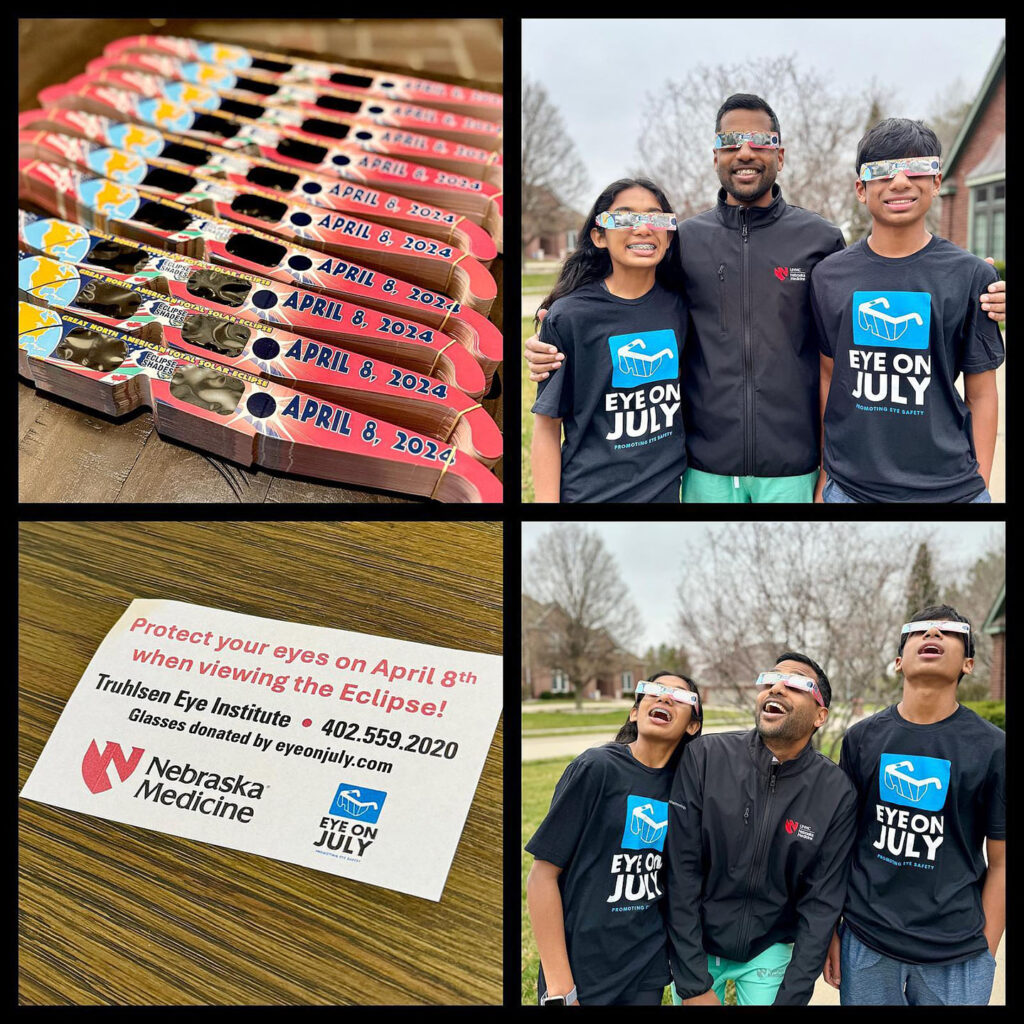A solar eclipse – when the moon blocks any part of the sun – is a spectacular and uncommon event. A total eclipse is even more rare, happening only once every 18 months. Still, depending on where you live, you may only ever see one or two total solar eclipses in your lifetime unless you travel to see one.
On Monday, April 8, almost all of North America will experience a partial solar eclipse, and anyone within an approximately 115-mile-wide path can see a total solar eclipse. While this is an amazing opportunity to witness a unique natural event, knowing how to view a solar eclipse safely is vital.
What happens if you view a solar eclipse without proper protection?
Although a solar eclipse entails blocking the sun, it’s only safe to look at it when wholly covered from view during the few moments of total coverage called the penumbra. “During an eclipse, it will look quite dark because the moon is blocking the sun, but those sun rays still penetrate the dark,” said ophthalmologist Rao Chundury, MD.
“Think of when you were a child using a magnifying glass to focus the sun’s rays to burn something,” said Dr. Chundury. “The same thing can happen to your eyes, and sun rays can burn your retina.” Such burning is called solar retinopathy and can result in permanent damage and vision loss.
The macula – located in the center of the retina – is especially susceptible to solar retinopathy. An essential area of the retina, the macula controls central vision, which you need most for day-to-day tasks. Because of this importance, protecting your macula from the sun’s harsh rays is vital, even during a solar eclipse. If any part of the sun is exposed, you must use eye protection specifically designed for solar viewing.
How to safely view a solar eclipse
“Your body does have some natural defenses to prevent against sun damage – like squinting or your pupil’s constricting – but the sun’s rays are too powerful, and these defenses aren’t able to stop the harm sun rays cause,” said Dr. Chundury. That’s why you need something to protect yourself to view the eclipse safely.
“The best method, in my opinion, is to use specifically designed solar view glasses or filters,” said Dr. Chundury. A specific ISO standard called ISO 12312-2 designates eyewear as safe for looking at the sun. Solar glasses and viewers with this international safety standard are the safest way to view the sun.
“To further promote the use of these proper solar glasses, NASA has teamed up with the American Astronomical Society to vet certain companies and ensure the standard they’re using is appropriate, and these companies are selling actual safety wear and not knockoffs,” said Dr. Chundury. You can find the list of approved glasses and viewers at eclipse.aas.org.
Don’t gamble with your eyesight
“The biggest misconception is that people feel they can use sunglasses or makeshift filters like smoke, glass, CDs, or exposed film to view an eclipse safely,” said Dr. Chundury. “While some of these materials might reduce the sun’s brightness, they’re insufficient to protect yourself against the kind of intense solar radiation that can damage your eyes.”

